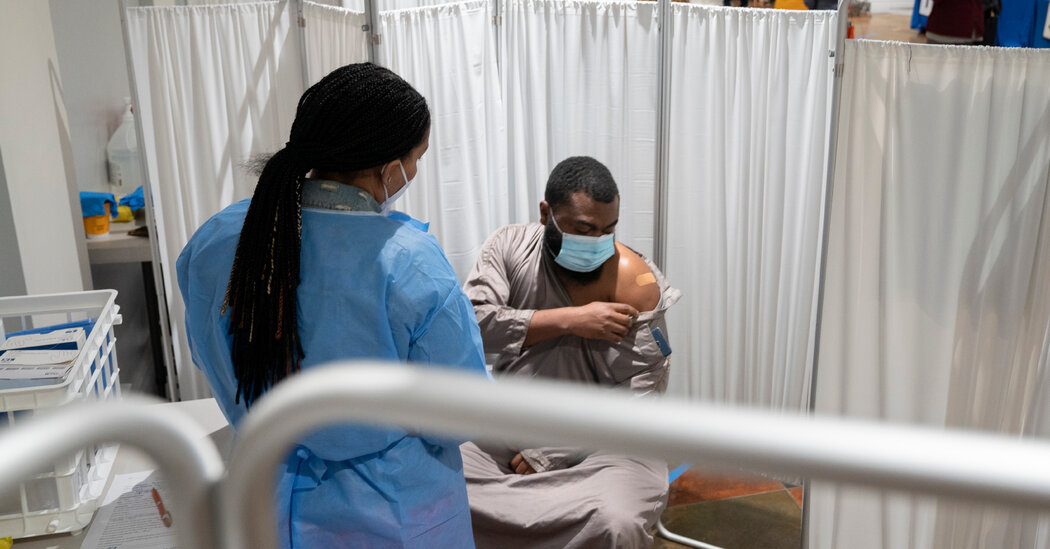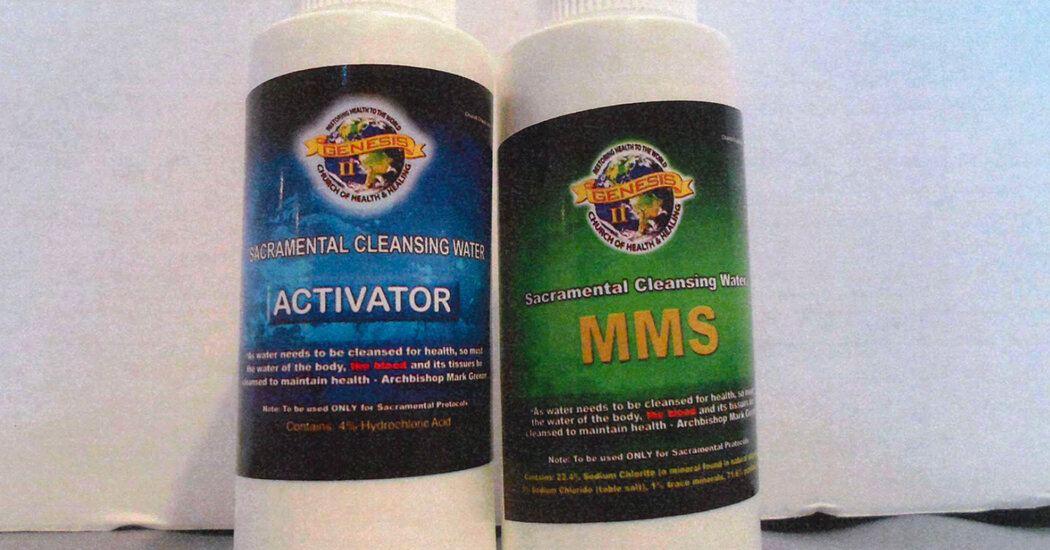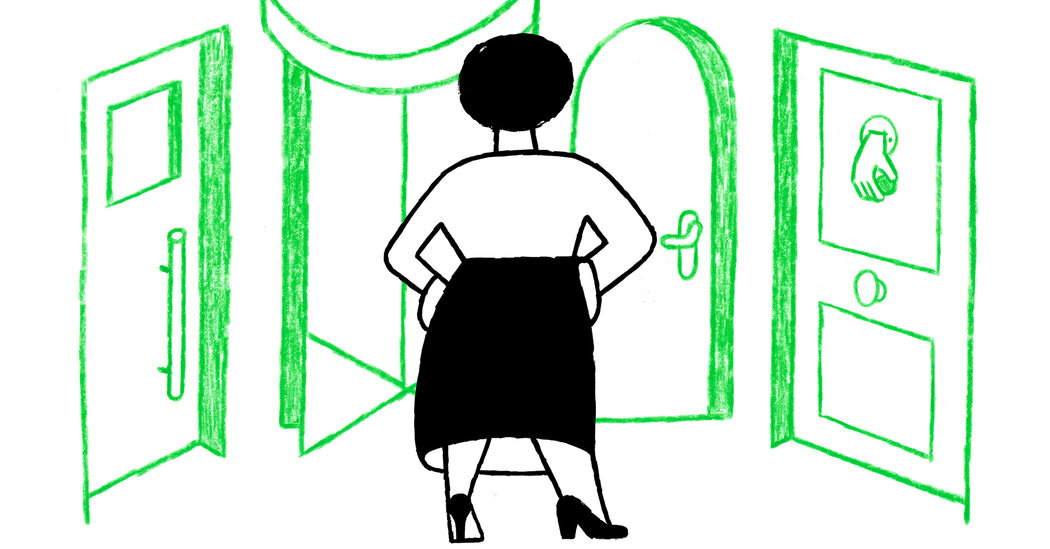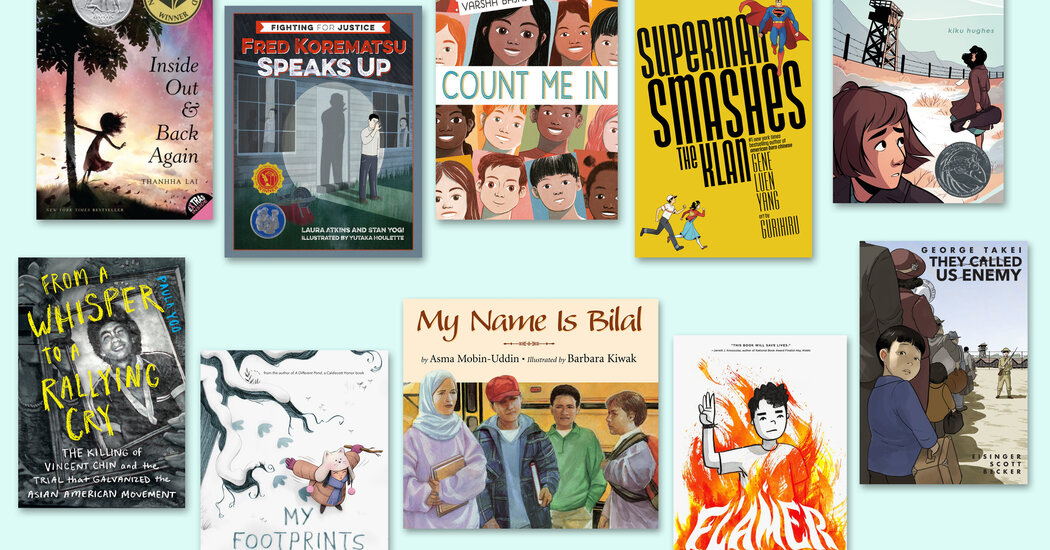Many job seekers don’t know where to look after the year we’ve just had. If you count yourself among this crowd, here’s how to get back into the market, even if you’re feeling rusty.Airlines are canceling flights because they don’t have enough pilots to fly them. Restaurants are posting open positions on their Instagram feeds. Even the local grocery store has a “hiring” sign out front. Welcome to spring 2021: After a year of being battered by the pandemic, the economy is finally showing signs of a strong, steady recovery, and jobs are popping up like crocuses. Employers added almost a million positions in March alone, according to the Labor Department.“Across our industry, everyone is prioritizing hiring,” said Kelly McCulloch, the chief people officer at Taco Bell, which held a nationwide “hiring party” by converting parking lots into drive-through job fairs last week. The company’s goal: To find 5,000 new employees in one day. “It’s definitely unprecedented,” she said.It’s not just food, travel and hospitality businesses that are desperate for workers. “The market for job candidates in the technology space is crazy right now,” said Randi Weitzman, a recruiter for Robert Half, an international human resources consulting firm. “There are more jobs than there are available candidates, and most candidates are receiving multiple competing offers.”But with this hiring frenzy comes a new conundrum: How can the still-staggering number of unemployed Americans (about 9.7 million, per the latest report from the Bureau of Labor Statistics, or more if you’re counting those who are underemployed) find their way to the right positions? Especially those people who have been out of the work force for months or even a full year?“It’s frustrating when we hear job candidates say they’ve been looking for work and can’t find it,” said Richard Wahlquist, president and chief executive of the American Staffing Association, an alliance of recruiters and staffing agencies that helps companies fill contract and permanent roles. “We’ve got more than seven million open jobs right now in America that businesses are having a hard time filling, and our members are having a hard time sourcing talent.”The main problem, Mr. Wahlquist said, is that many job seekers don’t know where to look — or how to market themselves, especially in this new era of online job postings and remote work. “A lot of people just aren’t good at finding employment,” he added. “Most of us don’t get taught how to do that by our parents, or in high school or college.” If you count yourself among this crowd, here’s how to bridge the disconnect and get back into the job market, even if you’re feeling rusty.Brush up on your digital communication skills.If you haven’t spent the past year in Zoom meetings, you didn’t exactly miss out, but you still need to be able to present yourself as savvy and professional onscreen. “A lot of interviews are virtual now, even if the job itself will be done in person,” Ms. Weitzman said. “People who’ve been out of the work force should practice setting up Zooms with their friends or family, so that they feel comfortable on video.”Even if you’ve had plenty of experience chatting with people on FaceTime, that’s not quite the same thing. “Ask for feedback on how your background looks, and know where to look in the camera or on the screen in order to come across as engaged,” Ms. Weitzman explained. “It takes practice to be able to shake off nerves when you’re going through the process.”Look online — and not just on LinkedIn.LinkedIn is by far the biggest job-searching tool, and you’ll want to make sure your profile is up-to-date and well tended. (Better yet, use the platform’s “Open to Work” feature, which displays a badge on your profile photo that indicates you are looking for a new job and makes it easier for potential employers to find you.) But it’s not the only place you should look; many employers are soliciting candidates on other social platforms, too, like Facebook and Instagram.“We’re constantly looking for new ways to market our jobs,” Ms. McCulloch said. “To do that, we have to meet candidates where they are — and many of them are on social channels.”That goes both ways. If you’re looking for work, it can be helpful to share that with your own online network. A friend or connection might be able to refer you to a job opening. “We fill a lot of positions through referrals from existing employees,” Ms. McCulloch said. (While you’re at it, tidy up your social media presence — potential employers might be put off by certain types of content.)Finally, don’t be scared of online networking events. Many offer useful services like résumé reviews and interview coaching.Talk to an employment agency, recruiter, or headhunter.Many job seekers think that they have to pay recruiters to find them jobs. But it’s actually the opposite — employers hire recruiters to find qualified candidates. And no matter what field you’re in, there’s probably a recruiter who’s looking to staff it right now, Mr. Wahlquist assured. “You can find one that represents people who do the kind of work that you’ve done, or what you’re looking to do, based on your skills,” he said. A Google search can provide names, while the American Staffing Association also has a directory online of employment firms that’s searchable by location, field and job type.Mr. Wahlquist recommends having initial conversations with recruiters, to give you a sense of what work they have done with people with backgrounds similar to yours. Feel free to ask the firm to help you identify exactly what your skill set is, and how to sell it.“Most of us have learned things over the course of our careers that don’t logically fall out of our fingers onto a résumé,” Mr. Wahlquist said. “An employment professional will go through your education, training and job history to get a full picture of your hard and human skill sets, with an eye on what’s needed today by employers.”Broaden your horizons.The transition to, and acceptance of, remote work has enabled employers to cast a wider net when they search for talent — and so should you, in looking for jobs.“Many employers are open to hiring remote workers, but often in the same time zone,” Ms. Weitzman said. “That means if you live on the East Coast, you’ll have multiple options in New York, Boston, Philadelphia, Connecticut.” Sure, this means you’re competing with a bigger pool of candidates, but it also gives you more chances to find the right fit.This could also be a good time to make a career transition. “You might want to be more flexible and think about switching fields,” Mr. Wahlquist said. “Take those skills that you’ve developed and try to find something that is even better, or more sustainable long term.”Meanwhile, consider taking a relevant training course, especially if you’ve been unemployed. “If you’re not working, I would 100-percent recommend to sign up for some training, because it shows initiative and a vested interest in updating and expanding your skill set,” Ms. Weitzman said. Be honest about why you’re unemployed.If you’ve been out of a job for a while, either for lack of opportunities or because you were busy shepherding children through Zoom school, that’s OK. “Everybody knows what happened this past year,” Mr. Wahlquist said. “Most people have a big free pass for a gap in their work history during the pandemic.”Still, you should be prepared to explain — succinctly — what happened and what you’ve been doing since. “Even if your past job loss wasn’t entirely due to Covid, most employers want to start a relationship with transparency,” he said.And, potential employers will want to check up on your references. Expect that they’ll want to talk to your former supervisors for the past five years, or past couple of jobs. “Take this time to go back to those people and be direct,” Mr. Wahlquist. “You can ask, ‘Will you be willing to give a reference, and able to give me a good reference?’” A question that your former supervisor might be asked is if he or she would rehire you. “And if the answer is no, then why?”Consider a temporary role.Some people enjoy contract work. But many others prefer the security of a long-term role, especially one that offers benefits like health insurance, retirement plans, and paid sick leave or vacation time. What a lot of people don’t realize is how useful temp work can be for landing a permanent position.“We see a lot of this in a recovering economy: Employers put people on temp-to-hire assignments,” Mr. Wahlquist said. “Essentially, it reduces a lot of the risk of hiring somebody, both for the job seeker and for the employer. You can see if your personality fits with your colleagues, and how you align in terms of mission values.” If it isn’t a slam dunk, you can both move on. But if it is, then your foot is in the door.At the very least, contract work puts something on your résumé. “It gets you experience, gets you exposure and gets you more references,” Ms. Weitzman said. “Sometimes a client falls in love with a contractor and says, ‘I can’t live without them, so I’m going to offer them a full-time job.’ It’s a great step for anyone to get back into the work force.”
Read more →








